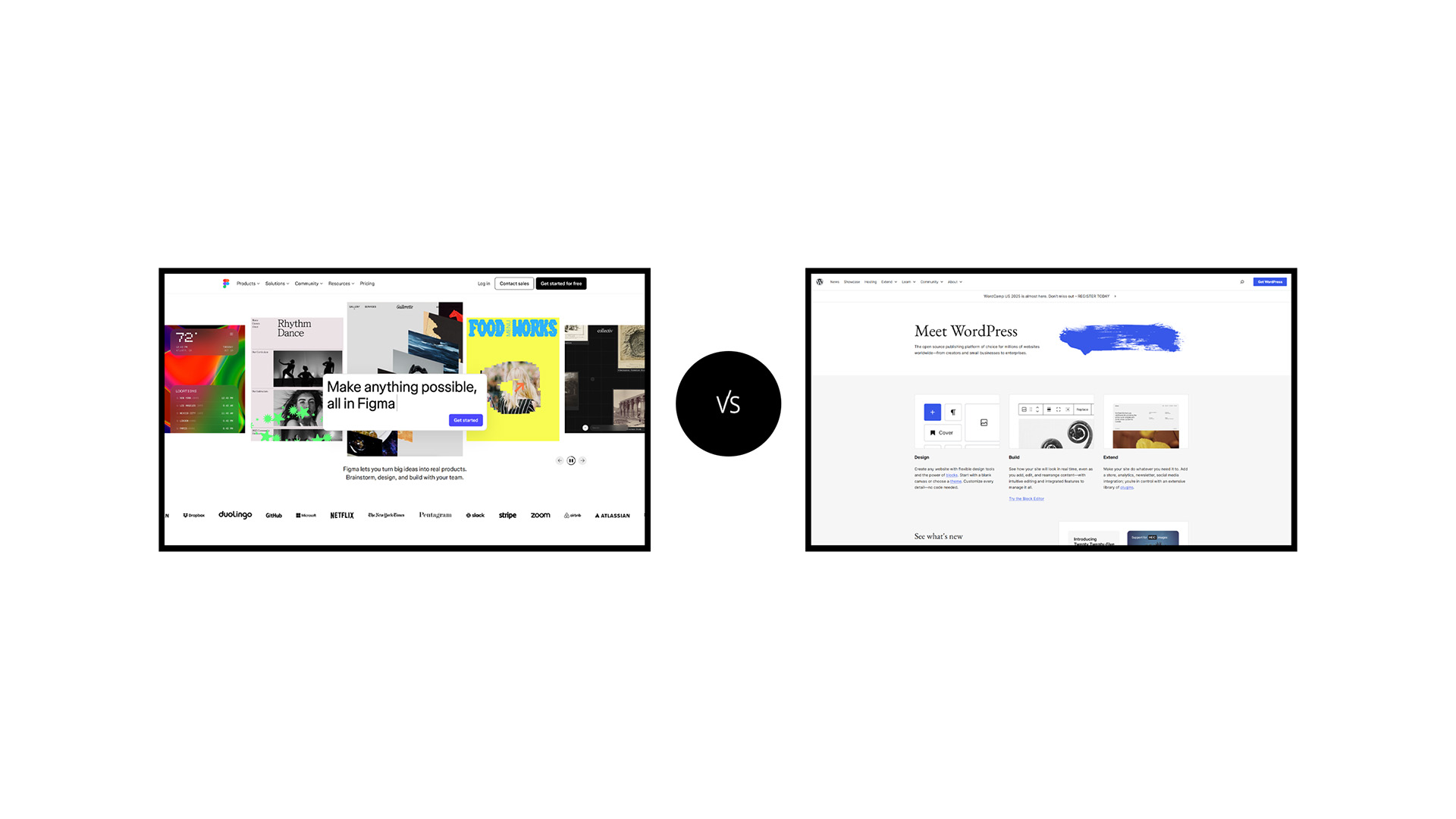by Shane Coursen, with assistance from Gemini
Figma itself is not a website platform. It’s a design tool that can be used as a stepping stone to a variety of different website platforms, ranging from its own “Figma Sites” to powerful no-code builders and custom-coded websites.
Figma is an extremely versatile tool that can be used by both individuals and teams, but Figma’s most powerful features are designed to facilitate collaboration of teams.
For an individual that wants to build their own website:
Figma is an excellent choice for a solo designer or developer. You can use it to:
- Design and prototype: Create the visual layout, user interface (UI), and user experience (UX) of your website. You can design everything from low-fidelity wireframes to high-fidelity, interactive prototypes.
- Visualize ideas: Figma provides a space to brainstorm and organize your thoughts using tools like FigJam, a digital whiteboard.
- Create design systems: Even for a single website, establishing a design system with reusable components and consistent styles can save a lot of time and effort.
- Translate designs to code (with limitations): While Figma doesn’t automatically build a fully functional website, its “Dev Mode” provides developers with the specs, measurements, and code snippets they need to translate the design into HTML, CSS, and other programming languages.
While it’s powerful, it may not be suitable for complex, data-driven web applications that require a full-fledged backend or a robust content management system (CMS, such as Magento and WordPress).
Is Figma the right tool to use to develop my personal / small business website?
The short answer is: WordPress/WooCommerce is the better option for actually building and running an e-commerce/small business website. Figma is the right approach for designing the website.
Think of it like this:
Figma is the architect and interior designer. It’s where you create the detailed blueprints, visualize the layout, choose the color palette, and define the user experience. You can design every single page, from the homepage to the product pages and the checkout flow, with pixel-perfect precision.
WordPress/WooCommerce is the general contractor. It’s the engine that powers the actual building. It handles all the critical functionality that Figma cannot, such as processing payments, managing inventory, creating user accounts, and handling shipping calculations.
Here’s a breakdown of the key differences and why you’d use each one:
Why WordPress/WooCommerce is the Better Option for a Live Website
Functionality: An e-commerce site isn’t just a design; it’s a complex application.
WooCommerce is the leading e-commerce plugin for WordPress. It provides the essential backend functionality for a store: a shopping cart, a checkout system, payment gateway integration (Stripe, PayPal, etc.), product listings, inventory management, and order tracking.
Figma has none of this functionality. It’s a static file that you can’t actually buy anything from.
Content Management System (CMS):
WordPress is a powerful CMS that allows you to easily add new products, write blog posts, update your business hours, and manage all your website’s content without needing a developer. This is crucial for a small business owner who needs to be able to make changes on their own.
Figma is a design tool, not a CMS. Changing text or images in Figma doesn’t change your live website.
SEO and Performance:
WordPress is built with SEO in mind and has a massive ecosystem of plugins (like Yoast SEO) to help you optimize your site for search engines.
Figma is an image file. It has no intrinsic SEO value, and a website built directly from it (using limited export options) may not perform as well as a professionally coded or properly managed WordPress site.
Community and Support:
With over 43% of the web using it, WordPress has an enormous community, countless tutorials, and professional support available to help you troubleshoot any issues.
The Synergistic Workflow: Using Both Figma and WordPress
The best approach for a small business or individual who wants a professional e-commerce site is to use both tools in a strategic workflow.
Design in Figma:
Use Figma to create the visual design of your website. This is where you can be creative and design a unique, custom look for your brand that stands out from a generic theme.
You can prototype the user journey, ensuring a smooth and intuitive checkout process.
Figma’s collaboration features are great for getting feedback from a co-founder or a designer before a single line of code is written.
Build with WordPress/WooCommerce:
Once the design is approved in Figma, you have two primary options:
You’ll still have to hire a developer: A developer will use your Figma design as a blueprint to build a custom WordPress theme. This gives you a completely unique, high-performing, and scalable website.
Use a Page Builder: You can use a WordPress page builder like Elementor or Divi to manually recreate your Figma design. Many of these page builders have deep integration with WooCommerce, allowing you to design the look of your store while leveraging all of WooCommerce’s functionality. This is a great no-code/low-code option.
Conclusion:
For building a professional, functional, and scalable e-commerce or small business website, WordPress with WooCommerce is the correct and necessary platform. Figma is overkill.
However, if you are able to double your website research & development budget, Figma is an invaluable tool for the design phase of that project. It allows you to create a beautiful, custom design that you can then implement on your WordPress site, ensuring your business has a unique and polished online presence.
